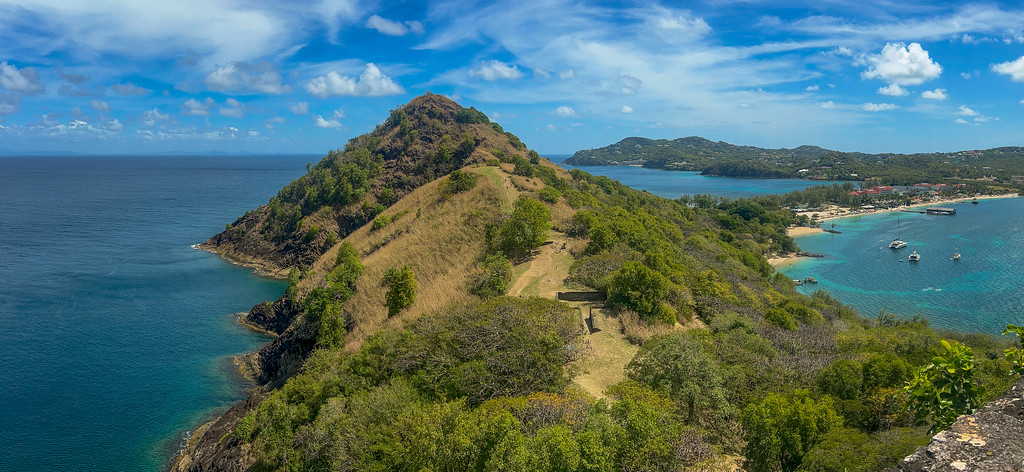
PIGEON ISLAND NATIONAL PARK
Description
Pigeon Island National Park, originally designated a national park in 1979 and then a national monument in 1992, is a picturesque 18-hectare reserve located in Gros Islet, in the north of the island of Saint Lucia. Once a separate island in the Caribbean Sea, this natural site was connected directly to Saint Lucia by an artificial causeway in 1972. Today, it has become an iconic location on the island, illustrating its rich heritage.
Historically, Pigeon Island is home to well-preserved ruins, military buildings, and forts, such as the 18th-century Fort Rodney, which bear witness to the different periods in the island’s history. Originally populated by Native Americans, mainly Caribs, the island later served as a hideout for pirates led by a Norman captain named François Le Clerc, nicknamed “Jambe de Bois” (Wooden Leg) by the French. Later, Pigeon Island became a strategic point during the conflicts between the French and British for control of Saint Lucia.
Thus, Pigeon Island National Landmark is not only a site of natural beauty, but also a living witness to the major historical events that have shaped the history of Saint Lucia.
Biodiversity
In terms of vegetation, the site includes dry coastal forest, tropical rainforest, shady groves, and vast grasslands. On the marine side, there are two beaches with crystal-clear waters that are ideal for nesting for many turtles. They are also home to various species of fish such as the Caribbean angelfish, also known as the tricolor angelfish (Holacanthus tricolor), the white barb (Mulloidichthys martinicus), the black-striped butterflyfish (Chaetodon striatus), the golden-headed puppetfish (Opistognathus aurifrons) and the two-colored damselfish (Stegastes partitus).
Its floral diversity creates a refuge for a variety of bird species, such as the purple night heron (Nyctanassa violacea), the bridled tern (Onychoprion anaethetus), the brown noddy (Anous stolidus), the white-bellied swallow (Progne dominicensis), the Saint Lucia warbler (Setophaga delicata), and the magnificent frigatebird (Fregata magnificens), among others.
The island is also home to numerous species of reptiles and a variety of colorful butterflies, each contributing to this dynamic ecosystem.
Ecotourism potential
This national monument is considered a “living museum within a natural setting.” Its management is entrusted to the Saint Lucia National Trust, an NGO responsible for the preservation, maintenance, and protection of Saint Lucia’s natural and historical sites.
In addition to numerous historical and natural attractions, there are many hiking trails leading to high vantage points overlooking the coast and the Caribbean Sea.
Pigeon Island National Park is renowned for its natural beauty, offering visitors seascapes ideal for underwater exploration, colorful coral reef viewing, snorkeling, and scuba diving.
Map location

Sources
Pigeon Island National Landmark – Saint Lucia National Trust
Pigeon Island Tour in St. Lucia (stluciawildlife.com)
Pigeon Island, Saint Lucia: A Gorgeous Slice Of History | Sandals
Pigeon Island, St. Lucia: A Guide To Exploring The Beautiful Destination – Isle Keys
PIGEON ISLAND UNDERWATER PARK, SAINT LUCIA 360 (youtube.com)
Informations
-
-
Location
Saint Lucia (Pigeon Island)
